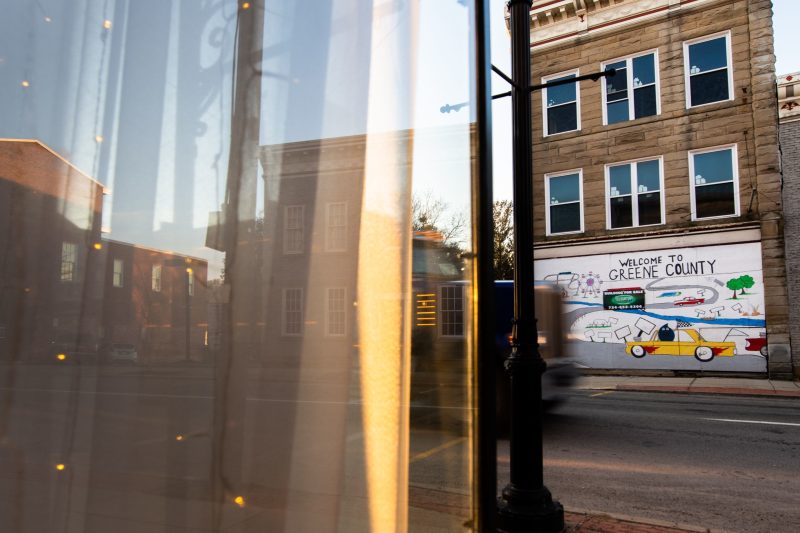Counties are waiting to hear if an oversight board will publicly approve their strategies.
Ed Mahon of Spotlight PA and Kate Giammarise of WESA
Spotlight PA is an independent, nonpartisan, and nonprofit newsroom producing investigative and public-service journalism that holds power to account and drives positive change in Pennsylvania. Sign up for our free newsletters.
HARRISBURG — Records obtained by Spotlight PA and WESA offer the most comprehensive public accounting to date of how counties across the state have used tens of millions of dollars they received in opioid settlement money.
The state’s billion-dollar opioid windfall has brought hope to a state where thousands of people each year die from drug overdoses. It’s also brought conflict about the best way to use the money.
The spending reports — which Spotlight PA and WESA are still analyzing — show a wide range of strategies. They offer insight into the wide reach of the opioid epidemic, highlighting the impact on neighborhoods, jails, child welfare programs, and a variety of local agencies.
In central Pennsylvania, Cumberland and Perry County officials both indicated in their reports that their spending decisions are influenced by the threat of litigation.
Their reports said that “due to recent lawsuits county jails are now faced with a new unfunded mandate to provide access to all three” federally approved medications for opioid use disorder. Cumberland County’s total amount spent or committed for that treatment program was about $586,000, while rural Perry County’s was $105,000.
Philadelphia reported spending or committing $7.5 million to support residents in the Kensington area of the city, where the report said people “live in a state of constant trauma due to 24 hour open-air drug market.” The city’s report said this trauma “significantly increases Kensington residents’ risks related to development of substance use disorder.”
As part of the program, funds were dedicated to improvements in local schools and parks, as well as home repair, rent relief, and eviction prevention, according to the report. The city made the case that its Kensington plans most closely match the broad settlement strategy of “Prevent Misuse of Opioids.”
In the Philly suburbs, Chester County officials reported spending or committing the funds to a variety of programs. A relatively small amount of the county’s allotment — about $1,800 — was committed to Project Sticker Shock, which uses stickers to warn people that it’s illegal to provide alcohol to anyone under age 21. In response to questions from Spotlight PA and WESA, the county defended using opioid settlement money for that purpose by saying, “underage drinking is a gateway to opiate use.”

Meanwhile, some counties reported spending no opioid money by the end of 2023, including rural Greene County in southwestern Pennsylvania. The county reported receiving about $288,000.
“We just have not found a project yet to expend those dollars,” Betsy McClure, vice chair of the county’s three-member Board of Commissioners, told WESA and Spotlight PA.
The news organizations obtained the records by filing requests under the state’s Right-to-Know Law with all 67 counties in the state, as well as 10 county district attorney offices that were eligible to receive the money based on their role in litigation.
In total, the news organizations received and publicly posted spending reports for more than 60 counties, the city of Philadelphia, and eight county district attorney offices, as of April 30. Some agencies said they didn’t possess the reports. Bucks County attributed the problem “to an apparent technical glitch.”
Counties had to file these reports by the middle of March with the Pennsylvania Opioid Misuse and Addiction Abatement Trust, a 13-member oversight board with the power to withhold and cut funding if it determines counties spent the money inappropriately. This is the first time counties had to file these reports, which cover spending decisions made in 2022 and 2023.
In order to receive the money, counties had to agree to use it in ways that are consistent with a settlement document called Exhibit E. The exhibit contains a range of recommended and approved strategies for treatment, prevention, and responding to the epidemic.
Cameron and Schuylkill Counties initially denied open records requests from Spotlight PA, saying the trust had yet to determine whether the spending described in their reports complied with the requirements of the opioid settlements. After an appeal to the state Office of Open Records, Cameron provided its report. The news organization’s appeal of Schuylkill’s denial was pending as of April 30.
Earlier this year, members of the oversight board approved a plan to review these spending reports in secret committee meetings, despite a court order requiring that the trust follow the state’s open meetings law. The trust says “additional review” will take place at public meetings scheduled for May 2 and June 20.
The trust recently published a summary of reported spending by category, but that information does not identify specific counties or other local agencies.
While county officials wait to hear if the trust will publicly approve their strategies, people like Cathleen Palm are reviewing the available records to learn about counties’ decisions.
The Berks County resident is the founder of the Center for Children’s Justice, which advocates for child protection and family issues. She said she believes the reports can help advocates with limited resources influence the process going forward.
“Because you guys are doing the hard work, tracking them down, putting them in a central spot, we then have the benefit of being able to look and see where counties are spending money on behalf of children and families,” Palm told Spotlight PA and WESA.
While the news organizations are still analyzing the records, here are some of the interesting uses and issues they have found so far.
Medication in jail
In 2022, officials with the Pennsylvania Institutional Law Project reported people with opioid use disorder face many barriers to accessing treatment if they are arrested and booked at county jails across the state.
Some jails didn’t offer any of the federally approved medications for opioid use disorder, while others limited what they offered or who they offered it to, according to their findings. A lack of access to these medications and the trauma of incarceration for people with opioid use disorder “further increases the likelihood of opioid overdose risk after release,” the group’s report said.
These federally approved medications — methadone, buprenorphine, and naltrexone — have widespread support in the medical community.
The opioid settlement spending reports obtained by Spotlight PA and WESA show that several counties dedicate their funds to medication-assisted treatment programs at their jails. Pennsylvania Institutional Law Project staff attorney Sarah Bleiberg Bellos sees this as a “really positive step.”
“There’s a huge number of people who are in our state’s jails that have opioid use disorder, and it is a really crucial time to be treating that disease,” Bellos told Spotlight PA and WESA.
Allegheny County also reported funding medication-assisted treatment at its jail, and a spokesperson told Spotlight PA and WESA that it is working on a phased-in expansion.
Last November, the U.S. Department of Justice announced it had reached a three-year agreement with Allegheny County regarding access to these medications. The county agreed to offer any federally approved medication for opioid use disorder to all individuals booked into the jail, if a qualified medical provider determines the treatment is medically appropriate, according to a copy of the agreement made public by the Justice Department.
In the reports for Perry and Cumberland Counties, both said medication-assisted treatment at their respective jails was the first priority for local leaders because of lawsuits and the “high risk for an overdose upon return to the community” for incarcerated people with opioid use disorder. Officials in each county said the lawsuits their reports referred to didn’t involve their county.
Other counties whose reports indicated they dedicated settlement funds to similar treatment programs for people in jail include Butler, Clearfield, Pike, Wayne, and York.
Housing
Some counties have used funds to aid people in recovery who need housing.
In rural Fayette County, officials reported using $100,000 in funds for a housing program for people with substance use disorder.
In nearby Allegheny County, officials reported spending more than $595,000 in settlement funds to support low-barrier homeless shelter services, and $181,000 went to a program to expand recovery housing.
“Stable housing is important for people in early recovery — or at any point in their life,” said Stuart Fisk, director of the Office of Behavioral Health at the Allegheny County Department of Human Services.
Children and families
Exhibit E outlines several ways counties can spend their funds on children and families, such as treatment for pregnant and postpartum women, treatment for neonatal abstinence syndrome, and support for children’s services.
Two neighboring counties in Western Pennsylvania, Armstrong and Indiana, plan to jointly hire a case manager for their counties’ child welfare agencies, which are responsible for protecting children from the damages of abuse and neglect. That case manager could talk to kids or parents with a substance use disorder, said Kami Anderson, executive director of the Armstrong-Indiana-Clarion Drug and Alcohol Commission.
“We want it to be somebody that’s nonthreatening to them,” Anderson said.
In Allegheny County, about $453,000 in settlement funds was spent providing child care through Early Head Start for kids whose caregivers have opioid use disorder and are undergoing treatment or job-searching.
Underage drinking
Chester’s County plan to spend settlement funds on Project Sticker Shock didn’t make sense to Jordan Scott, an advocate with the Pennsylvania Harm Reduction Network.
“My thought was just, ‘Why?’” Scott said. “I don’t see how it’s even relevant to what the money’s supposed to be spent on.”
In its spending report, the county said Project Sticker Shock is designed to “capitalize on community activism, cooperative efforts, and collective responsibilities to combat underage drinking and its related problems.” As part of the program, warning stickers are placed on cases of alcohol at participating distributors, according to the county.
In response to questions from Spotlight PA and WESA, the county cited two academic journal articles, said many adults are not aware of the law and the penalties for providing alcohol to anyone under 21, and said the warning stickers have also been placed on pizza boxes.
The county’s response said the program is consistent with Exhibit E, and argued it aligns with multiple approved uses, including for school-based and youth-focused initiatives “that have demonstrated effectiveness in preventing drug misuse and seem likely to be effective in preventing the uptake and use of opioids.”
Chester County’s spending report also describes dedicating funds for other initiatives, including access to opioid overdose reversal medication, expanded toxicology testing in its coroner’s office, and medication-assisted treatment treatment to people who are incarcerated.
BEFORE YOU GO… If you learned something from this article, pay it forward and contribute to Spotlight PA at spotlightpa.org/donate. Spotlight PA is funded by foundations and readers like you who are committed to accountability journalism that gets results.




